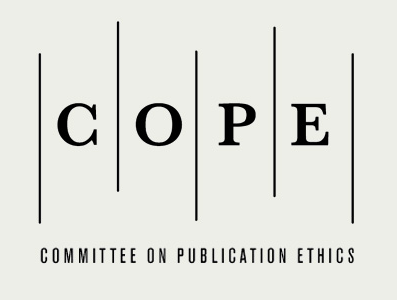Engagement in sports and children’s cognitive abilities: an analysis of executive functions
Nataša S. Buha, University of Belgrade, Faculty of Special Education and Rehabilitation, Belgrade, Serbia, e-mail: natasabuha@fasper.bg.ac.rs
Bojan Z. Dučić, University of Belgrade, Faculty of Special Education and Rehabilitation, Belgrade, Serbia
Mirjana M. Japundža-Milisavljević, University of Belgrade, Faculty of Special Education and Rehabilitation, Belgrade, Serbia
Иновације у настави, XXXVII, 2024/4, стр. 17–34
| PDF | | Extended summary PDF |
DOI: 10.5937/inovacije2404017B
Summary: Studies examining the correlation between children’s participation in sports activities and their executive functions (EFs) are relatively scarce, especially those that control the impact of participants’ intelligence. This research aimed to compare the EFs of children engaged in sports with those of their non-athletic peers, while controlling the impact of intelligence. Additionally, it compared the EFs of children participating in open skills sports (OSS) with those practicing closed skills sports (CSS). The sample included 83 participants (53% girls), aged 9-11 years, of whom 40 engaged in sports during their leisure time. Intelligence was evaluated using Raven’s Progressive Matrices, while working memory was assessed using tasks such as Digit Span Backward and Figure Span Backward. Inhibitory control was measured using the Dodrill’s Stroop Test and the Go/No-Go task, while cognitive flexibility was evaluated with the Wisconsin Card Sorting Test. Planning skills were assessed using the Twenty Questions Task and the Tower of London. The results revealed that children engaged in sports achieved better outcomes only in nonverbal working memory compared to the non-athletes. Involvement in OSS, rather than CSS, is associated with superior performance in nonverbal working memory. The findings suggest that engaging in cognitively stimulating physical activities holds potential benefits for the cognitive development of typically developing children. The observed relationship between sports activities and working memory further implies potential benefits for children with neurodevelopmental disorders. This underscores the necessity for additional research aimed at exploring specific mechanisms and adapting interventions to foster cognitive development in this group of children.
Keywords: executive functions, nonverbal working memory, sport, open skills sports, closed skills sports.
АНГАЖОВАЊЕ У СПОРТУ И КОГНИТИВНЕ СПОСОБНОСТИ ДЕЦЕ:
АНАЛИЗА ЕГЗЕКУТИВНИХ ФУНКЦИЈА
Егзекутивне функције (ЕФ) когнитивни су процеси вишег реда који олакшавају ка циљу усмерено понашање, а активирају се током социјалних интеракција и у новим, комплексним ситуацијама. Међу научницима постоји сагласност да базичне аспекте ЕФ чине инхибиторна контрола, радна меморија и когнитивна флексибилност (Friedman & Miyake, 2017), који представљају градивни елемент комплексних функција као што су закључивање, решавање проблема и планирање (Diamond, 2020). Базичне и комплексне ЕФ су од велике важности за академско постигнуће (на пример, De Santana et al., 2022) и ментално здравље (на пример, Diaz-Marsa et al., 2023). Имајући у виду да неки спољашњи фактори могу модулирати перформансу у домену ЕФ, од велике је важности истражити факторе који доприносе њиховом оптималном развоју. Новија истраживања указују на значајну повезаност између физичке активности и когнитивних способности, посебно ЕФ (Hernández-Mendo et al., 2019). Актуелни истраживачки тренд испитује како врста покрета у одређеним спортовима и предвидљивост спортског окружења утичу на унапређење ЕФ. Спортови се могу класификовати у активности које захтевају вештине отвореног или затвореног типа, при чему сваки тип активира специфичне когнитивне способности у зависности од карактеристика окружења (Knapp, 2024). Спортови засновани на отвореним вештинама (ОВ), попут кошарке, захтевају перцепцију, пажњу, планирање и доношење одлука у динамичном и непредвидљивом окружењу, док спортови са затвореним вештинама (ЗВ), попут трчања, обично захтевају мање когнитивно ангажовање и изводе се у предвидљивим контекстима. Резултати досадашњих истраживања указују на то да особе које се баве ОВ спортовима, посебно тимским спортовима из ове групе, имају боље ЕФ у поређењу са онима који су ангажовани у ЗВ спортовима (Krenn et al., 2018). Међутим, истраживачки налази нису униформни; неки аутори не налазе значајне разлике између група спортова, док други извештавају о супротним резултатима. Несклад у налазима, како код одраслих, тако и код деце, може бити последица недовољне контроле варијабли које су повезане са перформансама у домену ЕФ. Једна од ових варијабли је ниво интелектуалног функционисања, јер особе са вишим коефицијентом интелигенције обично имају боље ЕФ, што чини контролу овог фактора важном за разумевање односа између физичке активности и ЕФ. Стога је циљ овог истраживања да испита ниво развоја базичних и комплексних ЕФ код деце узраста 9–11 година, у зависности од тога да ли се баве спортом у слободно време или не, уз контролу утицаја интелигенције. Додатно, овим истраживањем ће бити поређене ЕФ деце која тренирају ОВ и ЗВ спортове. Истраживањем су обухваћена 83 детета (53% девојчица), ученика једне основне школе у Београду. Од укупног броја деце 48,2% се бави спортом у слободно време. Ови испитанци су додатно подељени у две групе: (а) деца ангажована у ОВ спортовима (56,8%) и (б) деца ангажована у ЗВ спортовима (43,2%), која тренирају најмање два пута недељно. Интелигенција је процењена Равеновим прогресивним матрицама; радна меморија задацима распона уназад (бројеви и фигуре уназад); инхибиторна контрола Струп тестом и задатком Крени/стани, а когнитивна флексибилност Висконсин тестом сортирања карата. Планирање је анализирано Тестом 20 питања и Лондонском кулом (детаљи о задацима могу се наћи у: Buha & Gligorović (2012; 2015; 2016) и Gligorović & Buha (2013)). Добијени резултати указују на то да је бављење спортом повезано са бољим постигнућем у домену невербалне радне меморије. Интелигенција као коваријат није значајно изменила резултате, нити је утицала на промену величине ефекта. Обе независне варијабле заједно (интелигенција и ангажовање у спорту) објашњавају око 15% варијабилности резултата, R2=.148, F(2, 80)=6.96, p=.002. Додатном анализом утврђено је да испитаници који се баве ОВ спортовима имају већи капацитет невербалне радне меморије, F(1, 76)=3.82, p=.026, partial η2=.09. Обе независне варијабле заједно објашњавају око 17% варијансе, R2=.167, F(3, 76)=5.09, p=.003. Разлике у осталим доменима и модалитетима ЕФ нису присутне. Иако спортске активности утичу на одређене когнитивне способности код деце, ови ефекти се не могу генерализовати на све домене ЕФ. Повезаност између спортских активности и радне меморије сугерише да би овакве активности могле користити и деци са неуроразвојним поремећајима, што наглашава потребу за додатним истраживањима усмереним на разумевање специфичних механизама и прилагођавање интервенција за подршку њиховом когнитивном развоју. Резултати ове студије могу помоћи доносиоцима политика у здравству и образо вању да препознају значај спортских активности, нарочито оних које укључују вештине отвореног типа, у побољшању когнитивних функција (радне меморије), а самим тим и академског успеха деце. У образовној политици ови налази наглашавају потребу за укључивањем физичких активности које захтевају когнитивни ангажман у школски програм – просветни радници могу заговарати структуриране програме физичког васпитања, увођење активних школских одмора и специфично дизајнираних активности у продуженом боравку. Такође, доносиоци политика би требало да подрже ваншколске спортске програме како би свим ученицима обезбедили равноправан приступ.
Кључне речи: егзекутивне функције, невербална радна меморија, спорт, отворене вештине, затворене вештине
References
- Alesi, M., Bianco, A., Luppina, G., Palma, A., & Pepi, A. (2016). Improving children’s coordinative skills and executive functions: the effects of a football exercise program. Perceptual and Motor Skills, 122(1), 27–46. https://doi.org/10.1177/0031512515627527
- Alloway, T. (2018). Working memory and clinical developmental disorders: Theories, debates and interventions. Routledge.
- Ardila, A., Pineda, D., & Rosselli, M. (2000). Correlation between intelligence test scores and executive function measures. Archives of Clinical Neuropsychology, 15(1), 31–36. https://doi.org/10.1016/S0887-6177(98)00159-0
- Becker, D. R., McClelland, M. M., Geldhof, G. J., Gunter, K. B., & MacDonald, M. (2018). Open-skilled sport, sport intensity, executive function, and academic achievement in grade school children. Early Education and Development, 29(7), 939–955. https://doi.org/10.1080/10409289.2018.1479079
- Ben-Zion, Z., Fine, N. B., Keynan, N. J., Admon, R., Green, N., Halevi, M., … & Shalev, A. Y. (2018). Cognitive flexibility predicts PTSD symptoms: observational and interventional studies. Frontiers in Psychiatry, 9, 477. https://doi.org/10.3389/fpsyt.2018.00477
- Bryant, L. M., Duncan, R. J., & Schmitt, S. A. (2021). The cognitive benefits of participating in structured sports for preschoolers. Early Education and Development, 32(5), 729–740. https://doi.org/10.1080/10409289.2020.1799619
- Buczyłowska, D., Petermann, F., & Daseking, M. (2020). Executive functions and intelligence from the CHC theory perspective: Investigating the correspondence between the WAIS-IV and the NAB Executive Functions Module. Journal of Clinical and Experimental Neuropsychology, 42(3), 240–250. https://doi.org/10.1080/13803395.2019.1705250
- Buha, N., & Gligorović, M. (2016). Executive functions and intelligence in typically developing children. Specijalna edukacija i rehabilitacija, 15(3), 215–238. https://doi.org/10.5937/specedreh15-12297
- Buha, N., & Gligorović, M. (2015). Selekcija i odlaganje motoričkog odgovora kod dece sa lakom intelektualnom ometenošću. U Kaljača S. (ur). Teškoće u mentalnom razvoju (str. 40–70). FASPER – ICF.
- Buha, N., & Gligorović, M. (2012). Sposobnost planiranja kod dece sa lakom intelektualnom ometenošću. Specijalna edukacija i rehabilitacija, 11(3), 365–382. https://doi.org/10.5937/specedreh11-2320
- Cartwright, K. B., Bock, A. M., Coppage, E. A., Hodgkiss, M. D., & Nelson, M. I. (2017). A comparison of cognitive flexibility and metalinguistic skills in adult good and poor comprehenders. Journal of Research in Reading, 40(2), 139–152. https://doi.org/10.1111/1467-9817.12101
- Chai, W. J., Abd Hamid, A. I., & Abdullah, J. M. (2018). Working memory from the psychological and neurosciences perspectives: A review. Frontiers in Psychology, 9, 401. https://doi.org/10.3389/fpsyg.2018.00401
- Chikha, A. B., Hawani, A., & Khanfir, A. (2021). The effect of play on cognitive functions and agility in a football cycle in children aged 11 to 12 years. Journal of Advances in Sports and Physical Education, 4(5), 131–137. https://doi.org/10.36348/jaspe.2021.v04i05.008
- Contreras-Osorio, F., Campos-Jara, C., Martínez-Salazar, C., Chirosa-Ríos, L., & Martínez-García, D. (2021). Effects of sport-based interventions on children’s executive function: A systematic review and meta-analysis. Brain Sciences, 11(6), 755. https://doi.org/10.3390/brainsci11060755
- Contreras-Osorio, F., Guzmán-Guzmán, I. P., Cerda-Vega, E., Chirosa-Ríos, L., Ramírez-Campillo, R., & Campos-Jara, C. (2022). Effects of the type of sports practice on the executive functions of schoolchildren. International Journal of Environmental Research and Public Health, 19(7), 3886. https://doi.org/10.3390/ijerph19073886
- Coulanges, L., Abreu-Mendoza, R. A., Varma, S., Uncapher, M. R., Gazzaley, A., Anguera, J., & Rosenberg-Lee, M. (2021). Linking inhibitory control to math achievement via comparison of conflicting decimal numbers. Cognition, 214, 104767. https://doi.org/10.1016/j.cognition.2021.104767
- Curran, T., Janovec, A., & Olsen, K. (2021). Making others laugh is the best medicine: humor orientation, healthoutcomes, and the moderating role of cognitive flexibility. Health Communication, 36(4), 468–475. https://doi.org/10.1080/10410236.2019.1700438
- De Greeff, J. W., Bosker, R. J., Oosterlaan, J., Visscher, C., & Hartman, E. (2018). Effects of physical activity on executive functions, attention and academic performance in preadolescent children: A meta-analysis. Journal of Science and Medicine in Sport, 21(5), 501–507. https://doi.org/10.1016/j.jsams.2017.09.595
- De Santana, A. N., Roazzi, A., & Nobre, A. P. M. C. (2022). The relationship between cognitive flexibility and mathematical performance in children: A meta-analysis. Trends in Neuroscience and Education, 28, 100179. https://doi.org/10.1016/j.tine.2022.100179
- Diamond, A. (2013). Executive functions. Annual Review of Psychology, 64, 135–168. https://doi.org/10.1146/annurev-psych-113011-143750
- Diamond, A. (2020). Executive functions. In Gallagher A., Bulteau C., Cohen D., & Michaud J. L. (Eds.). Handbook of clinical neurology, Vol. 173 (pp. 225–240). Elsevier.
- Diaz-Marsa, M., Pemau, A., De La Torre-Luque, A., Vaz-Leal, F., Rojo-Moreno, L., Beato-Fernandez, L., … & Carrasco, J. L. (2023). Executive dysfunction in eating disorders: Relationship with clinical features. Progress in
Neuro-Psychopharmacology and Biological Psychiatry, 120, 110649. https://doi.org/10.1016/j.pnpbp.2022.110649 - Ding, W. N., Sun, J. H., Sun, Y. W., Chen, X., Zhou, Y., Zhuang, Z. G., … & Du, Y. S. (2014). Trait impulsivity and impaired prefrontal impulse inhibition function in adolescents with internet gaming addiction revealed by a Go/No-Go fMRI study. Behavioral and Brain Functions, 10(1), 1–9. https://doi.org/10.1186/1744-9081-10-20
- Dousset, C., Chenut, C., Kajosch, H., Kornreich, C., & Campanella, S. (2022). Comparison of neural correlates of reactive inhibition in cocaine, heroin, and polydrug users through a contextual Go/No-Go task using eventrelated potentials. Biology, 11(7), 1029. https://doi.org/10.3390/biology11071029
- Egger, F., Benzing, V., Conzelmann, A., & Schmidt, M. (2019). Boost your brain, while having a break! The effects of long-term cognitively engaging physical activity breaks on children’s executive functions and academic achievement. PloS One, 14(3), e0212482. https://doi.org/10.1371/journal.pone.0212482
- Feng, X., Zhang, Z., Jin, T., & Shi, P. (2023). Effects of open and closed skill exercise interventions on executive function in typical children: A meta-analysis. BMC Psychology, 11(1), 420. https://doi.org/10.1186/s40359-023-01317-w
- Fitzgerald, S. A., Fitzgerald, H. T., Fitzgerald, N. M., Fitzgerald, T. R., & Fitzgerald, D. A. (2022). Somatic, psychological and economic benefits of regular physical activity beginning in childhood. Journal of Paediatrics and Child Health, 58(2), 238–242. https://doi.org/10.1111/jpc.15879
- Formenti, D., Trecroci, A., Duca, M., Cavaggioni, L., D’Angelo, F., Passi, A., … & Alberti, G. (2021). Differences in inhibitory control and motor fitness in children practicing open and closed skill sports. Scientific Reports, 11(1), 4033. https://doi.org/10.1038/s41598-021-82698-z
- Friedman, N. P., & Miyake, A. (2017). Unity and diversity of executive functions: Individual differences as a window on cognitive structure. Cortex, 86, 186–204. https://doi.org/10.1016/j.cortex.2016.04.023
- Gao, Q., Jia, G., Zhao, J., & Zhang, D. (2019). Inhibitory control in excessive social networking users: Evidence from an event-related potential-based Go-Nogo task. Frontiers in Psychology, 10, 1810. https://doi.org/10.3389/fpsyg.2019.01810
- Giofre, D., Donolato, E., & Mammarella, I. C. (2018). Verbal and visuospatial WM & academic achievement. Trends in Neuroscience and Education, 12, 1–6. http://dx.doi.org/10.1016/j.tine.2018.07.001
- Giordano, G., Gómez-López, M., & Alesi, M. (2021). Sports, executive functions and academic performance: Acomparison between martial arts, team sports, and sedentary children. International Journal of Environmental Research and Public Health, 18(22), 11745. https://doi.org/10.3390/ijerph182211745
- Gligorović, M., & Buha, N. (2013). Verbalne strategije rešavanja problema kod dece sa lakom intelektualnom ometenošću. Specijalna edukacija i rehabilitacija, 12(1), 11–23. https://doi.org/10.5937/specedreh12-3333
- Harfmann, E. J., Rhyner, K. T., & Ingram, R. E. (2019). Cognitive inhibition and attentional biases in the affectivego/no-go performance of depressed, suicidal populations. Journal of Affective Disorders, 256, 228–233. https://doi.org/10.1016/j.jad.2019.05.022
- Heilmann, F., Weinberg, H., & Wollny, R. (2022). The impact of practicing open-vs. closed-skill sports on executive functions—A meta-analytic and systematic review with a focus on characteristics of sports. Brain Sciences, 12(8), 1071. https://doi.org/10.3390/brainsci12081071
- Hernández-Mendo, A., Reigal, R. E., López-Walle, J. M., Serpa, S., Samdal, O., Morales-Sánchez, V., … & Falco, C. (2019). Physical activity, sports practice, and cognitive functioning: The current research status. Frontiers in Psychology, 10, 2658. https://doi.org/10.3389/fpsyg.2019.02658
- Isbell, E., Calkins, S. D., Swingler, M. M., & Leerkes, E. M. (2018). Attentional fluctuations in preschoolers: Direct and indirect relations with task accuracy, academic readiness, and school performance. Journal of Experimental Child Psychology, 167, 388–403. https://doi.org/10.1016/j.jecp.2017.11.013
- James, R. (1995). The techniques of instruction. Aldershot: Gower Publishing Ltd.
- Jaschke, A. C., Honing, H., & Scherder, E. J. (2018). Longitudinal analysis of music education on executive functions in primary school children. Frontiers in Neuroscience, 12, 307064. https://doi.org/10.3389/fnins.2018.00103
- Kim, H. Y. (2013). Statistical notes for clinical researchers: Assessing normal distribution (2) using skewness and kurtosis. Restorative Dentistry & Endodontics, 38(1), 52–54. https://doi.org/10.5395/rde.2013.38.1.52
- Knapp, B. (2024). Skill in sport: The atrainment of proficiency. Routledge.
- Krenn, B., Finkenzeller, T., Würth, S., & Amesberger, G. (2018). Sport type determines differences in executive functions in elite athletes. Psychology of Sport and Exercise, 38, 72–79. https://doi.org/10.1016/j.psychsport.2018.06.002
- Lemonaki, R., Xanthopoulou, D., Bardos, A. N., Karademas, E. C., & Simos, P. G. (2021). Burnout and job performance: a two-wave study on the mediating role of employee cognitive functioning. European Journal of Work and Organizational Psychology, 30(5), 692–704. https://doi.org/10.1080/1359432X.2021.1892818
- Liu, Q., Gao, F., Wang, X., Xia, J., Yuan, G., Zheng, S., … & Zhu, X. (2023). Cognitive inflexibility is linked to abnormal frontoparietal-related activation and connectivity in obsessive-compulsive disorder. Human Brain Mapping, 44(16), 5460–5470. https://doi.org/10.1002/hbm.26457
- López-Vicente, M., Garcia-Aymerich, J., Torrent-Pallicer, J., Forns, J., Ibarluzea, J., Lertxundi, N., … & Sunyer, J. (2017). Are early physical activity and sedentary behaviors related to working memory at 7 and 14 years of age?. The Journal of Pediatrics, 188, 35–41. https://doi.org/10.1016/j.jpeds.2017.05.079
- Mashhoon, Y., Betts, J., Farmer, S. L., & Lukas, S. E. (2018). Early onset tobacco cigarette smokers exhibit deficits in response inhibition and sustained attention. Drug and Alcohol Dependence, 184, 48–56. https://doi.org/10.1016/j.drugalcdep.2017.11.020
- Mazzoccante, R. P., de Luca Corrêa, H., de Sousa, I. R. C., Camarâ, M. A., de Sousa Alves, G., de Sousa, B. R. C., … & de Melo, G. F. (2020). The influence of sports practice in children aged 6 to 7 years on physical fitness, motor coordination and executive functions. Revista de Psicología del Deporte, 29(4), 175–184.
- McGreen, J., Kemps, E., & Tiggemann, M. (2023). The relationship between inhibitory control and food consumption or choice: A systematic review and meta-analysis. Appetite, 106466. https://doi.org/10.1016/j.appet.2023.106466
- Miyake, A., Friedman, N. P., Emerson, M. J., Witzki, A. H., & Howerter, A. (2000). The unity and diversity of executive functions and their contributions to complex “frontal lobe” tasks: A latent variable analysis. Cognitive Psychology, 41(1), 49–100. https://doi.org/10.1006/cogp.1999.0734
- Möhring, W., Klupp, S., Ludyga, S., & Grob, A. (2022). Executive functions in children engaging in openand closed-skilled sports. Psychology of Sport and Exercise, 61, 102218. https://doi.org/10.1016/j.psychsport.2022.102218
- Patwardhan, I., Nelson, T. D., McClelland, M. M., & Mason, W. A. (2021). Childhood cognitive flexibility and externalizing and internalizing behavior problems: Examination of prospective bidirectional associations. Research on Child and Adolescent Psychopathology, 49, 413–427. https://doi.org/10.1007/s10802-020-00757-x
- Popov, S., & Jakovljev, I. D. (2017). Uticaj fizičkog vežbanja na unapređenje kognitivnih funkcija. Tims. Acta: naučni časopis za sport, turizam i velnes, 11(2), 111–120. https://doi.org/10.5937/timsact11-14016
- Russo, G., Ottoboni, G., Tessari, A., & Ceciliani, A. (2021). The positive impact of physical activity on working memory abilities: Evidence from a large Italian pre-adolescent sample. Journal of Human Sport and Exercise, 16(Proc2), 277–288. https://dx.doi.org/10.14198/jhse.2021.16.Proc2.13
- Schmidt, M., Jäger, K., Egger, F., Roebers, C. M., & Conzelmann, A. (2015). Cognitively engaging chronic physical activity, but not aerobic exercise, affects executive functions in primary school children: a group-randomized controlled trial. Journal of Sport and Exercise Psychology, 37(6), 575–591. https://doi.org/10.1123/jsep.2015-0069
- Sinđelić, N. M., Dragan, S., & Pešemiš, V. M. (2023). Relacije između motoričkih sposobnosti i morfoloških karakteristika kao predispozicije učenika za bavljenje sportom. Inovacije u nastavi, 36(2), 142–154. https://doi.org/10.5937/inovacije2302142S
- Ursache, A., Noble, K. G., & Pediatric Imaging, Neurocognition and Genetics Study. (2016). Socioeconomic status, white matter, and executive function in children. Brain and Behavior, 6(10), e00531. https://doi.org/10.1002/brb3.531
- Zajączkowska, M., & Abbot-Smith, K. (2020). “Sure I’ll help—I’ve just been sitting around doing nothing at school all day”: Cognitive flexibility and child irony interpretation. Journal of Experimental Child Psychology, 199, 104942. https://doi.org/10.1016/j.jecp.2020.104942
- Yamashita, M., Yoshihara, Y., Hashimoto, R., Yahata, N., Ichikawa, N., Sakai, Y., … & Imamizu, H. (2018). A prediction model of working memory across health and psychiatric disease using whole-brain functional connectivity. Elife, 7, e38844. https://doi.org/10.7554/eLife.38844
- Wang, Y. H., Zhou, H. H., Luo, Q., & Cui, S. (2022). The effect of physical exercise on circulating brain-derived neurotrophic factor in healthy subjects: A meta-analysis of randomized controlled trials. Brain and Behavior, 12(4), e2544. https://doi.org/10.1002/brb3.2544
- Webster, C. A., Russ, L., Vazou, S., Goh, T. L., & Erwin, H. (2015). Integrating movement in academic classrooms: understanding, applying and advancing the knowledge base. Obesity Reviews, 16(8), 691–701. https://doi.org/10.1111/obr.12285
- Wessel, J. R., & Anderson, M. C. (2024). Neural mechanisms of domain-general inhibitory control. Trends in Cognitive Sciences, 28(2), 124–143. https://doi.org/10.1016/j.tics.2023.09.008
- Willinger, U., Deckert, M., Schmöger, M., Schaunig-Busch, I., Formann, A. K., & Auff, E. (2019). Developmental steps in metaphorical language abilities: The influence of age, gender, cognitive flexibility, information processing speed, and analogical reasoning. Language and Speech, 62(2), 207–228. https://doi.org/10.1177/0023830917746552
- Wu, N., Chen, Y., Yang, J., & Li, F. (2017). Childhood obesity and academic performance: the role of working memory. Frontiers in Psychology, 8, 611. https://doi.org/10.3389/fpsyg.2017.00611
- Xue, Y., Yang, Y., & Huang, T. (2019). Effects of chronic exercise interventions on executive function among children and adolescents: A systematic review with meta-analysis. British Journal of Sports Medicine, 53(22), 1397–1404. https://doi.org/10.1136/bjsports-2018-099825
Copyright © 2024 by the publisher Faculty of Education, University of Belgrade, SERBIA. This is an open access article distributed under the terms of the Creative Commons Attribution License (CC BY 4.0) (https://creativecommons.org/licenses/by/4.0/), which permits unrestricted use, distribution, and reproduction in any medium, provided the original paper is accurately cited.





